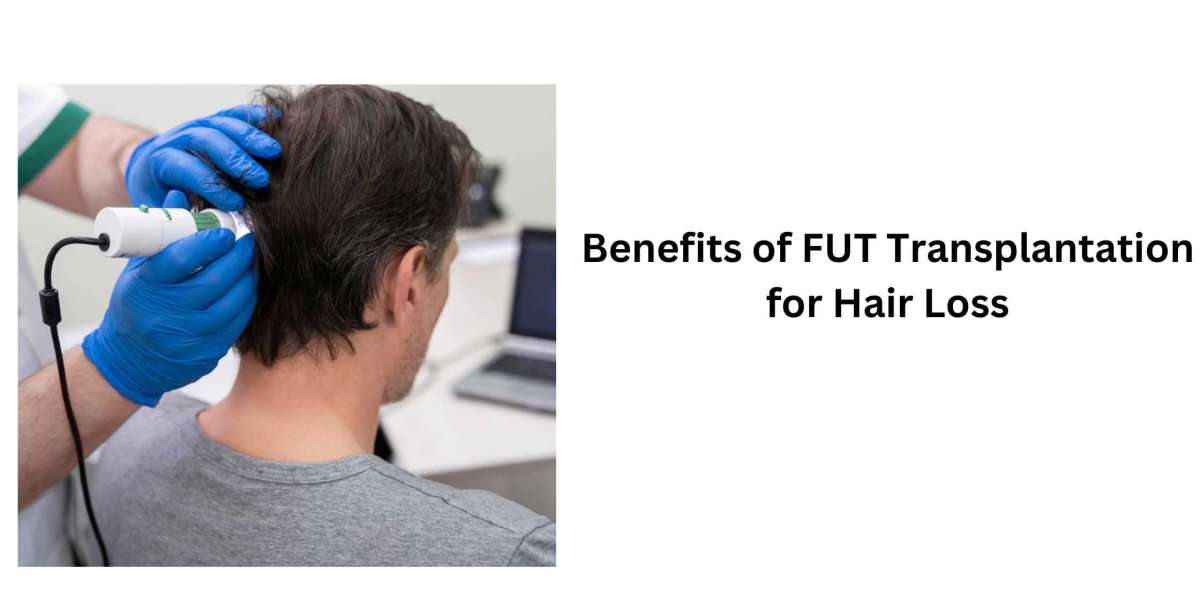Hair loss can significantly impact confidence and well-being for both men and women. Thankfully, recent advancements in medical technology have introduced effective solutions, such as Follicular Unit Transplantation (FUT). FUT is a well-established method for hair restoration, providing numerous benefits for hair loss patients. This article will explore the advantages of FUT transplantation, explain how it works, and help determine if it's the right choice for you.
What is FUT Transplantation?
FUT transplantation, or strip harvesting, is a hair restoration method that involves extracting a strip of scalp from the donor area, usually the rear of the head. This strip contains numerous hair follicles, which are then dissected into individual follicular units. These units are then transplanted into the area experiencing hair loss. This method allows transplanting many grafts in a single session, benefiting individuals with significant hair loss.
How FUT Transplantation Works
In FUT transplantation, the procedure starts with administering local anesthesia to ensure the patient's comfort. Once the donor strip is extracted, the area is sutured, leaving a linear scar that will eventually become less noticeable. The extracted follicles are carefully prepared and implanted into tiny incisions in the recipient area. This meticulous process ensures natural-looking results and allows for high-density hair restoration.
Advantages of FUT Transplantation
High Graft Yield
One of the primary benefits of FUT transplantation is the ability to harvest many hair follicles in a single session. This is especially beneficial for those with severe hair loss or needing substantial coverage. The high graft yield of FUT transplantation ensures that patients can achieve fuller and more comprehensive results, enhancing their overall appearance and self-esteem.
Precise and Natural Results
FUT transplantation is renowned for its precision in achieving natural-looking results. The technique allows for carefully placing each hair follicle, ensuring the new hair growth mimics the natural pattern and direction. This meticulous approach minimizes the risk of an unnatural appearance and provides a more aesthetically pleasing outcome.
Minimal Downtime and Recovery
FUT transplantation generally involves a relatively short recovery period compared to other hair restoration methods. Patients may experience slight discomfort and swelling, but these symptoms typically resolve within a few days. Most individuals can produce normal activities within one to two weeks, making FUT transplantation convenient for those with busy schedules.
Considerations for FUT Transplantation
Potential Scarring
While FUT transplantation offers many benefits, it's essential to consider the potential for scarring. The procedure leaves a linear scar in the donor area, which can be more visible in individuals with shorter hairstyles. However, this scar typically fades over time and can be effectively camouflaged by surrounding hair. Discussing alternative options with a hair restoration specialist can provide additional insights for those concerned about scarring.
Post-Procedure Care
Proper post-procedure care is crucial for optimal results following FUT transplantation. Patients should adhere to their surgeon's instructions for wound care, medication, and hair washing.
Conclusion
In summary, FUT transplantation offers numerous benefits for individuals experiencing hair loss. From its ability to provide high graft yields and natural-looking results to its relatively minimal downtime, FUT transplantation is a compelling option for those seeking effective hair restoration. Understanding the benefits and factors of FUT transplantation can guide you in forming a well-informed decision, helping you regain confidence and achieve a fuller head of hair. Consulting with a skilled hair restoration specialist will clarify if FUT transplantation suits your needs and goals.
FAQs About FUT Transplantation
1. How long does it take to see results from FUT transplantation?
Results from FUT transplantation can vary, but patients typically begin to see new hair growth within three to four months after the procedure.
2. Are there any risks associated with FUT transplantation?
Like any surgical procedure, FUT transplantation carries some risks, including infection, bleeding, and scarring. However, these risks are generally low when a skilled and experienced surgeon performs the procedure.
3. Can FUT transplantation be combined with other hair restoration treatments?
FUT transplantation can be integrated with additional hair restoration treatments, including Platelet-Rich Plasma (PRP) therapy and medications such as minoxidil and finasteride. Combining treatments can enhance results and address various aspects of hair loss.








